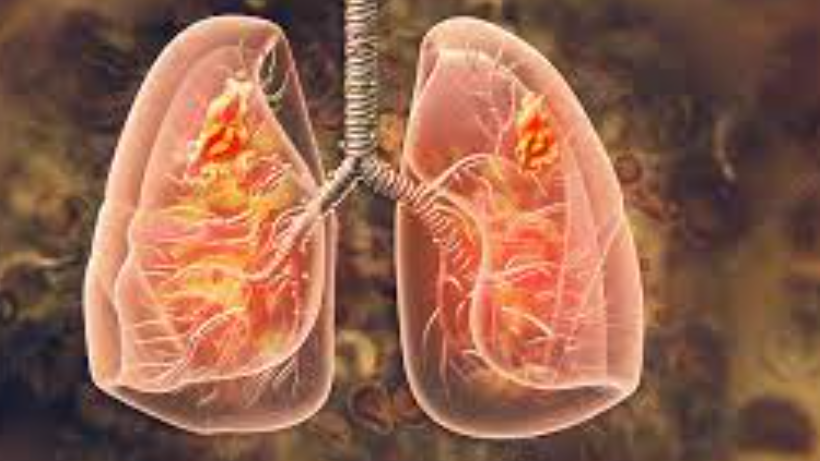
Lung Cancer: Symptoms, Diagnosis, and Treatment Strategies
26 Oct, 2023
 Healthtrip Team
Healthtrip TeamLung cancer
Lung cancer is a type of cancer that begins in the lungs, which are essential organs for breathing located in the chest. The lungs are responsible for taking in oxygen from the air we breathe and expelling carbon dioxide, a waste product of the body's processes.
Transform Your Beauty, Boost Your Confidence
Find the right cosmetic procedure for your needs.

We specialize in a wide range of cosmetic procedures

Lung cancer occurs when cells in the lungs undergo abnormal changes, leading to uncontrolled growth and the formation of tumors. These tumors can interfere with the normal functioning of the lungs, affecting breathing and, if left untreated, can spread to other parts of the body through the bloodstream or lymphatic system.
According to the World Health Organization (WHO) Lung cancer is the leading cause of cancer death worldwide, accounting for an estimated millions of deaths each year.
It is the second most common cancer worldwide, after skin cancer.
Lung cancer is more common in men than in women, but the incidence rate in women has been increasing in recent years.
The five-year survival rate for lung cancer is 20% worldwide,
Types of Lung cancer
1. Non-Small Cell Lung Cancer (NSCLC)
Non-Small Cell Lung Cancer (NSCLC) constitutes the majority of lung cancer cases, accounting for approximately 85% of diagnoses. It is a diverse group that includes various subtypes:
Most popular procedures in India
Total Hip Replacemen
Upto 80% off
90% Rated
Satisfactory

Total Hip Replacemen
Upto 80% off
90% Rated
Satisfactory

Total Hip Replacemen
Upto 80% off
90% Rated
Satisfactory

ANGIOGRAM
Upto 80% off
90% Rated
Satisfactory

ASD Closure
Upto 80% off
90% Rated
Satisfactory

- Adenocarcinoma:
- Often found in the outer regions of the lung, adenocarcinoma is the most common NSCLC subtype. It tends to grow more slowly than other types and is more common in non-smokers.
- Squamous Cell Carcinoma:
- Typically found in the central part of the lungs, squamous cell carcinoma is often linked to smoking. It tends to grow more slowly and is less likely to spread initially.
- Large Cell Carcinoma:
- Large cell carcinoma is a less common subtype, characterized by large, abnormal-looking cells. It can occur in any part of the lung and tends to grow and spread quickly.
2. Small Cell Lung Cancer (SCLC)
Small Cell Lung Cancer (SCLC) is a more aggressive type, representing about 15% of lung cancer cases. It is strongly associated with smoking.
- Rapid Growth: SCLC tends to grow rapidly and has often spread beyond the lung when diagnosed.
- Highly Responsive to Initial Treatment: While initially responsive to chemotherapy and radiation, it tends to recur.
3. Other Less Common Types
Beyond NSCLC and SCLC, there are rarer subtypes, including:
- Bronchial Carcinoids:
- These tumors arise from neuroendocrine cells. They are generally slow-growing and less aggressive.
- Pulmonary Sarcomatoid Carcinoma:
- A rare and aggressive form that contains both carcinomatous and sarcomatous components.
Symptoms and Signs of Lung cancer
- Persistent Cough: A chronic cough that lingers, especially if it changes in intensity or if a person is a chronic smoker, should be evaluated.
- Shortness of Breath: Breathlessness or difficulty in breathing, even with minimal physical exertion, can be a sign of lung-related issues, including lung cancer.
- Chest Pain: Pain or discomfort in the chest area, often exacerbated by deep breathing or coughing, may indicate lung-related problems.
- Unexplained Weight Loss: Significant, unintentional weight loss without changes in diet or physical activity can be a concerning symptom associated with various cancers, including lung cancer.
- Fatigue: Generalized tiredness and lack of energy that persists, despite adequate rest, could be a symptom of an underlying health issue, including lung cancer.
- Blood in Sputum: Hemoptysis, or the coughing up of blood-streaked sputum, may indicate various lung conditions, and it should be promptly investigated.
Causes of Lung cancer
- Smoking (Primary Cause): Cigarette smoke contains numerous carcinogens that can damage lung cells, leading to the development of cancer. Smoking is the primary and most significant risk factor for lung cancer.
- Secondhand Smoke: Non-smokers exposed to the smoke exhaled by smokers are also at an increased risk of developing lung cancer.
- Environmental Factors (e.g., Radon, Asbestos):
- Radon: A naturally occurring radioactive gas that can seep into homes and buildings, radon exposure is a known environmental risk factor.
- Asbestos: Exposure to asbestos, often in workplaces like construction sites, shipyards, or older buildings, increases the risk of lung cancer.
- Genetic Predisposition: While the majority of lung cancers are associated with environmental factors, there is evidence that genetic factors can play a role. Individuals with a family history of lung cancer may have a higher risk.
Stages in Lung cancer
- Stage 0: Carcinoma in Situ
- At this early stage, abnormal cells are found only in the innermost layer of the lung lining. It is often referred to as "pre-cancer" as the cells have not invaded deeper tissues.
- Stage I: Localized Tumor
- The cancer is confined to the lung and has not spread to nearby lymph nodes or other organs. It is typically a smaller-sized tumor.
- Stage II: Limited Spread
- At this stage, the tumor may have grown larger or spread to nearby lymph nodes. However, it remains localized within the lung and has not reached distant organs.
- Stage III: Extensive Spread
- The cancer has progressed further, involving nearby structures and possibly more extensive lymph node involvement. It may have spread to the chest wall, diaphragm, or nearby structures.
- Stage IV: Advanced Metastasis
- This is the most advanced stage, indicating that the cancer has metastasized (spread) to distant organs, such as the other lung, bones, liver, or brain. The tumor may be of any size, and there may be extensive lymph node involvement.
The staging of lung cancer is crucial for determining the extent of the disease and guiding treatment decisions. It helps oncologists design an appropriate and personalized treatment plan, considering factors such as the size and location of the tumor, lymph node involvement, and the presence of distant metastasis. Staging also plays a significant role in predicting prognosis and outcomes for individuals with lung cancer.
Diagnosis of Lung cancer
- Imaging Tests (X-rays, CT Scans):
- X-rays: Initial imaging to identify abnormal masses or nodules in the lungs. While they provide a broad view, they may not offer detailed information on the nature of abnormalities.
- CT Scans (Computed Tomography): More detailed than X-rays, CT scans provide cross-sectional images, enabling a clearer view of the lungs. They are crucial for identifying the size, location, and spread of tumors.
- Biopsy:
- A definitive diagnosis often requires a biopsy, where a small sample of suspicious tissue is removed and examined under a microscope. Biopsies can be performed through various methods, including:
- Needle Biopsy: Using a thin needle to extract tissue samples.
- Bronchoscopy: A flexible tube with a camera is inserted through the airways to collect samples.
- Surgical Biopsy: Invasive procedures, such as thoracotomy or video-assisted thoracoscopic surgery (VATS), may be necessary for deeper or hard-to-reach tumors.
- A definitive diagnosis often requires a biopsy, where a small sample of suspicious tissue is removed and examined under a microscope. Biopsies can be performed through various methods, including:
- Sputum Cytology:
- Examination of coughed-up mucus (sputum) under a microscope to detect cancer cells. While less invasive, it may not always provide a conclusive diagnosis, and additional tests may be needed.
- Molecular Testing:
- Molecular or genetic testing of tumor tissue to identify specific mutations or biomarkers. This information is crucial for determining targeted therapies that may be more effective in certain cases.
Treatment of Lung cancer
1. Surgery:
Surgery is a primary treatment for lung cancer, particularly in the early stages. Different surgical approaches may be employed, ranging from removing a portion of the lung (wedge resection) to the removal of an entire lobe (lobectomy) or even the whole lung (pneumonectomy). The goal is to eliminate the cancerous tissue and, if possible, any nearby lymph nodes where the cancer may have spread. Surgical interventions are most effective when the cancer is localized and has not extensively invaded surrounding tissues.
2. Radiation Therapy:
Radiation therapy employs high doses of radiation to target and destroy cancer cells. This treatment is often used either before surgery to shrink tumors or after surgery to eliminate any remaining cancer cells. It can also be a primary treatment for those who are not surgical candidates. External beam radiation, where the radiation source is directed from outside the body, and brachytherapy, involving internal radiation with implanted devices, are common approaches. Radiation therapy is valuable in cases where localized treatment is necessary.
3. Chemotherapy:
Chemotherapy utilizes powerful drugs to kill rapidly dividing cancer cells throughout the body. This systemic treatment is often employed when cancer has spread beyond the lungs or in cases where surgery or radiation alone may not be sufficient. Chemotherapy can be administered intravenously or orally, and the choice of drugs depends on the type and stage of lung cancer. While effective in targeting cancer cells, chemotherapy can also affect normal, healthy cells, leading to side effects.
4. Targeted Therapy:
Targeted therapy focuses on specific molecules involved in cancer growth and progression. This treatment is tailored to the molecular characteristics of the cancer, and drugs are designed to inhibit or block specific pathways that cancer cells use to grow. Common targets include epidermal growth factor receptor (EGFR) and anaplastic lymphoma kinase (ALK). Targeted therapy is often well-tolerated and can be particularly effective in cases with specific genetic mutations.
5. Immunotherapy:
Immunotherapy harnesses the body's immune system to recognize and destroy cancer cells. Checkpoint inhibitors, a common form of immunotherapy, block proteins that prevent immune cells from attacking cancer cells. Another approach involves genetically modifying T cells (CAR T-cell therapy) to enhance their cancer-fighting capabilities. Immunotherapy has shown promising results, especially in advanced stages of lung cancer, and is contributing to a shift in the treatment landscape towards more personalized and targeted approaches.
Risk Factors of Lung cancer
Smoking is the leading risk factor for lung cancer, accounting for about 80% of all cases.
Lung cancer, a formidable adversary in the realm of health, often arises from a complex interplay of risk factors that extend beyond individual choices. While the primary culprit is unquestionably cigarette smoking, the multifaceted nature of these risk factors underscores the need for a nuanced approach to prevention.
1. Smoking History:
Unquestionably the most significant risk factor, a history of cigarette smoking remains the leading cause of lung cancer. Both current and former smokers are at elevated risk, and the duration and intensity of smoking amplify this risk. The chemical cocktail within tobacco smoke inflicts profound and lasting damage to the delicate cells of the lungs, setting the stage for malignancy.
2. Environmental Exposure:
Beyond personal habits, environmental factors contribute significantly. Secondhand smoke, often underestimated, poses a substantial risk, particularly in enclosed spaces and workplaces. Occupational hazards, such as prolonged exposure to asbestos, radon, and certain chemicals, elevate the risk profile. Initiatives to reduce exposure in workplaces and public spaces are crucial in curbing these environmental threats.
3. Family History:
A familial predisposition to lung cancer, while less common, can elevate individual risk. Genetic factors may influence susceptibility, making it imperative for individuals with a family history of lung cancer to be vigilant and proactive in adopting preventive measures. Genetic counseling and testing can shed light on potential predispositions, allowing for tailored risk management.
4. Age and Gender:
Advancing age remains a non-negotiable risk factor, with the majority of lung cancer cases diagnosed in individuals over 65. Moreover, gender plays a role, with historically higher rates in men. However, the gap is narrowing, possibly due to shifts in smoking patterns over the years.
Complications of Lung cancer
Lung cancer, with its intricate web of complexities, doesn't merely confine its impact to the lungs; it often unfurls a cascade of complications that reverberate throughout the body. Understanding these complications is essential not only for comprehensive patient care but also for tailoring treatment strategies that address the multifaceted nature of the disease.
1. Metastasis:
Perhaps the most ominous complication, metastasis marks the point where lung cancer extends its reach beyond its initial location. Cancer cells break away, traveling through the bloodstream or lymphatic system to distant organs like the liver, bones, or brain. Metastasis significantly alters treatment approaches, demanding a more comprehensive and targeted strategy to address cancer's widespread influence.
2. Respiratory Issues:
Given the lungs' central role in the respiratory system, it's unsurprising that lung cancer can precipitate a range of breathing-related complications. As tumors grow, they may obstruct air passages, leading to shortness of breath and persistent coughing. Additionally, the compromised lung function may result in pneumonia or other respiratory infections, further taxing an already weakened system.
3. Paraneoplastic Syndromes:
Lung cancer doesn't merely confine its impact to the primary tumor site; it can instigate paraneoplastic syndromes, where cancer cells release substances that affect distant tissues and organs. These syndromes can manifest in a variety of ways, from hormonal imbalances to neurological complications, adding layers of complexity to the overall clinical picture.
How to Prevent?
Preventing lung cancer involves a strategic and concerted effort to mitigate risk factors and foster a culture of respiratory well-being. Here's a comprehensive guide on how to safeguard against this formidable disease:
1. Smoking Cessation Programs:
The unequivocal leading cause of lung cancer is smoking. Engage in smoking cessation programs, which offer a combination of counseling, support groups, and nicotine replacement therapies. Quitting smoking significantly reduces the risk of developing lung cancer and contributes to overall health.
2. Avoidance of Secondhand Smoke:
Recognize the risks of secondhand smoke. Create smoke-free environments at home and advocate for smoke-free policies in public spaces. Protecting non-smokers from the harmful effects of passive smoking is integral to preventing lung cancer.
3. Occupational Safety Measures:
For those working in industries associated with lung cancer risks (e.g., construction, mining), strict adherence to occupational safety guidelines is paramount. Proper use of protective equipment and minimizing exposure to carcinogens can substantially reduce the risk.
4. Radon Testing and Mitigation:
Radon, a naturally occurring radioactive gas, is a significant risk factor. Test homes and workplaces for radon levels, and if elevated, implement mitigation strategies. Proper ventilation and sealing entry points can effectively reduce radon exposure.
5. Healthy Lifestyle Choices:
Adopting a healthy lifestyle contributes to overall well-being and can indirectly reduce lung cancer risk. Maintain a balanced diet rich in fruits and vegetables, engage in regular physical activity, and stay hydrated. A robust immune system is better equipped to thwart cancerous developments.
6. Regular Health Check-ups and Screenings:
Regular medical check-ups and screenings are instrumental in early detection. High-risk individuals, such as current or former smokers, should discuss the possibility of lung cancer screenings with their healthcare providers. Early detection allows for more effective treatment.
lung cancer's complexity requires a nuanced approach. Early detection through recognizing symptoms and regular screenings is crucial. Smoking cessation, awareness, and timely interventions are key preventive measures. With diverse treatment options and advancing research, there's hope in improving outcomes. By prioritizing prevention and awareness, we can make significant strides in the fight against lung cancer.
How can we help with the treatment?
If you're on the lookout for treatment in India, Thailand, Singapore, Malaysia, UAE, and Turkey, let Healthtrip be your compass. We will serve as your guide throughout your medical treatment. We'll be by your side, in person, even before your medical journey commences. The following will be provided to you:
- Connect with renowned doctors from a network spanning 35+ countries and access the world's largest health travel platform.
- Collaboration with 335+ top hospitals , including Fortis and Medanta.
- Comprehensive treatments from Neuro to Cardiac to Transplants, Aesthetics, and Wellness.
- Post-treatment care and assistance.
- Teleconsultations at $1/minute with leading surgeons.
- Trusted by 44,000+ patients for appointments, travel, visa, and forex assistance.
- Access top treatments and packages, such as Angiograms and many more.
- Gain insights from genuine patient experiences and testimonials.
- Stay updated with our medical blog.
- 24/7 unwavering support, from hospital formalities to travel arrangements or emergencies.
- Pre-scheduled specialist appointments.
- Prompt emergency assistance, ensuring safety.
Our success stories
Wellness Treatment
Give yourself the time to relax
Lowest Prices Guaranteed!

Lowest Prices Guaranteed!
